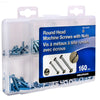In the realm of household maintenance, appliance repair has long been a critical skill, evolving significantly over the decades. As our homes have become more technologically advanced, so too have the methods and techniques for diagnosing and fixing appliance issues. By exploring the historical perspectives on appliance troubleshooting techniques, we uncover the fascinating journey that this essential aspect of home living has undertaken.
The Early Days: Hands-On Diagnosis
In the early 20th century, appliance repair was a rudimentary affair. The first generation of electrical appliances, such as washing machines and refrigerators, necessitated a more hands-on approach for troubleshooting. With fewer components and simpler designs, most issues were mechanical and could be solved with basic tools and a keen eye for mechanical faults. The lack of standardized parts often meant that repairs were creative endeavors, requiring a deep understanding of the mechanics involved.
The Advent of Electrical Components
As the complexity of home appliances increased with the introduction of electrical components, troubleshooting techniques began to shift. Electrical issues required a new set of skills and tools, including multimeters and voltage testers. This period marked the beginning of more systemic diagnosis approaches, focusing on isolating problems within the electrical circuits of appliances.
For instance, in washing machines, the clutch assembly is often a point of failure due to its role in controlling the spin cycle. The LG 3661EA1009J Housing Assembly, Clutch Cou is a prime example of a component that technicians learned to troubleshoot for optimal machine performance.
The Rise of Digital Technologies
The digital age brought about an even more dramatic change in appliance repair. Modern appliances are integrated with digital control boards and sensors, significantly altering troubleshooting techniques. Technicians now use diagnostic codes and software to pinpoint issues, allowing for faster and more precise repairs. This advancement has led to the development and use of detailed schematic diagrams and the necessity for ongoing technical training to keep pace with rapidly changing technologies.
The LG EBT64174305 Chassis Assembly represents the type of intricate component that requires specialized knowledge for effective troubleshooting and repair. Additionally, digital components like the Supco LP2001T Washer Drain Pump Assembly exemplify the technological advancements in appliance parts that require expert handling during repairs.
Today’s Perspective: Integrated Technological Solutions
Currently, appliance repair technicians are well-versed in both mechanical and digital solutions. The integration of IoT technologies further advances the complexity and capacity for remote diagnostics and preventive maintenance. However, the foundational skills of observation, testing, and mechanical comprehension remain crucial.
As we continue to embrace new technologies, foundational knowledge combined with adaptability defines today's approaches to appliance troubleshooting. With resources like XpartSupply, consumers and technicians alike have access to a wide array of parts and components that facilitate successful repairs and maintenance of modern appliances.
In conclusion, the historical evolution of appliance troubleshooting techniques highlights the necessary balance between traditional skills and modern technology. As appliances continue to evolve, so too will the art and science of keeping them running efficiently, underscoring the perpetual importance of appliance repair expertise.







